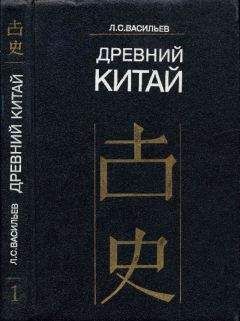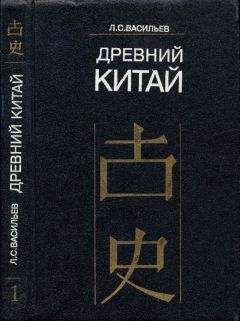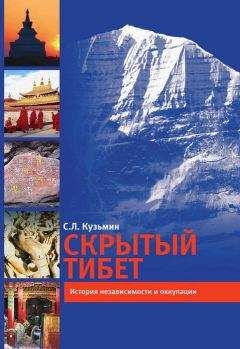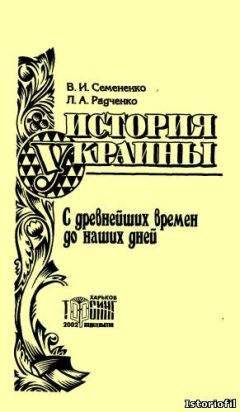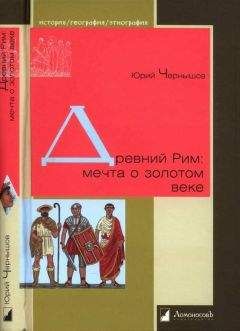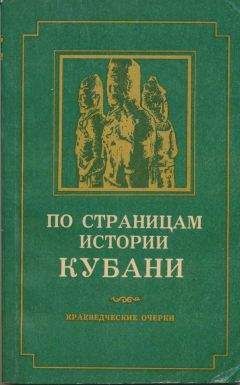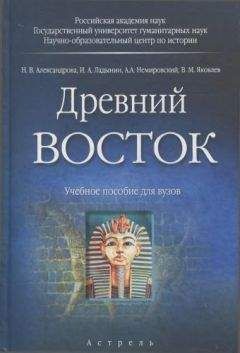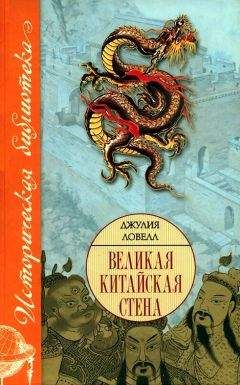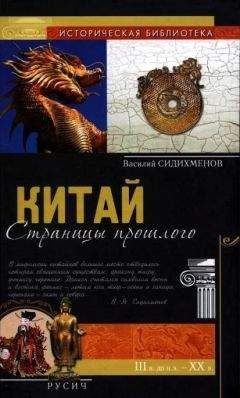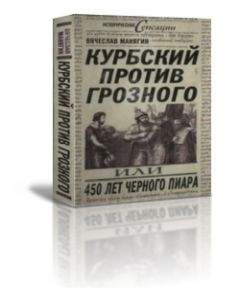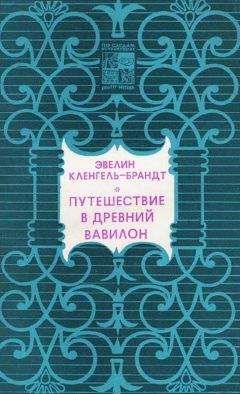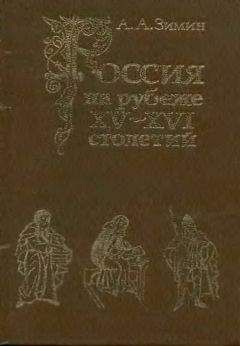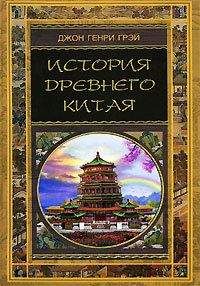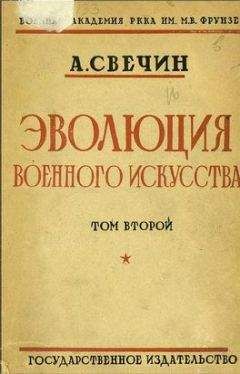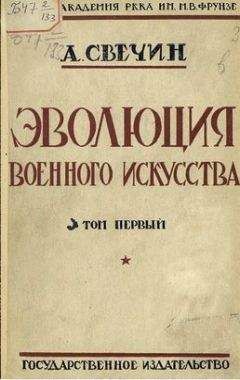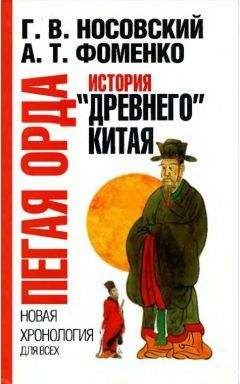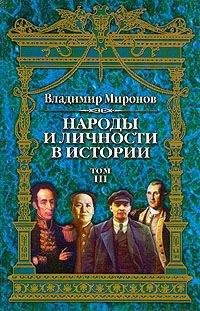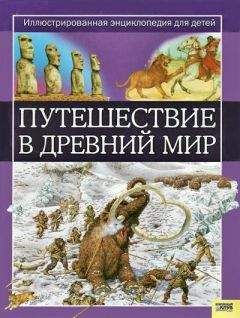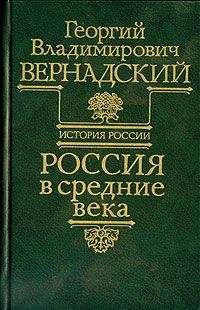Леонид Васильев - Древний Китай. Том 3: Период Чжаньго (V—III вв. до н.э.)
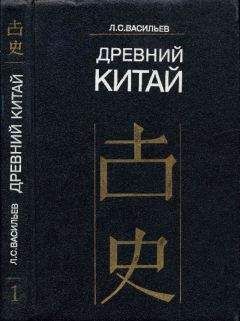
Скачивание начинается... Если скачивание не началось автоматически, пожалуйста нажмите на эту ссылку.
Жалоба
Напишите нам, и мы в срочном порядке примем меры.
Описание книги "Древний Китай. Том 3: Период Чжаньго (V—III вв. до н.э.)"
Описание и краткое содержание "Древний Китай. Том 3: Период Чжаньго (V—III вв. до н.э.)" читать бесплатно онлайн.
Заключительный том трехтомника «Древний Китай» посвящен последнему периоду существования династии Чжоу, так называемой эпохе Чжаньго («Сражающиеся царства»). Рассказывается о политической истории этого времени (V–III вв. до н. э.), об искусстве дипломатии, о реформах, способствовавших усилению прежде отсталого царства Цинь, которое, одолев соперников, основало первую в истории Китая империю. Преимущественное внимание в томе уделено переменам в характере и облике древнекитайского общества, прежде всего процессу его радикальной дефеодализации, а также развитию главных школ древнекитайской мысли, которые, особенно конфуцианство, легли в основу успешного развития китайской цивилизации вплоть до наших дней.
We mean here the mysterious origin of those ideas, including mythology, which appears for the first time in Chinese writings (we refrain from discussing oral tradition, as it is hard to say something definite regarding it) and is widely represented in the Chuang-tzu. The book in question is one of the most interesting in the Ancient China. In addition to profound metaphysical constructs that are entirely foreign to any earlier Chinese text, it contains a huge number of parables, anecdotes, myths and short essays on abstract topics.
Chuang-tzu's metaphysics and cosmogony proceed from the assumption that the Universe was created out of the original Chaos and that its creation is related to the Great Tao (the Tao of Taoism, which differs from the Tao of Confucius) — a certain Supreme Absolute, extrinsic to the phenomenal world and undetectable by the senses. Те is an emanation of Tao[305]. Tao is everywhere and nowhere, it pervades everything and it lies at the bottom of the cosmogonic process. The ideas of Chuang-tzu — like those of Tsou Yan — are very unorthodox for Ancient Chinese thought. It is very hard to believe that they could have popped up out of the blue, in a country where no one took interest in such things before. Well, there is no need to believe that. One has but to pick up, for instance, an unassuming chrestomathy titled Ancient Indian Philosophy (Drev-neindiyskaya filosofiya, Moscow, 1972; in Russian) to find very similar in nature — though much more refined and elaborated — constructs of the Rigveda and Upanishads. They contain the same ideas: the Great Brahman-Absolute and its emanation Atman, the existent and non-existent, Chaos and the emergence of the One, the latter's association with thought (the Word, Logos), the original emptiness so favored by Chuang-tzu.
Here is another important detail to be added to what was said above: the Chinese term ch 7 (lit. "air") was given by Taoists a new meaning: "vital force", "energy" and the like. According to them, the universe turned out to be permeated with the vigorously circulating ch 7 proto-substance. It is this ch 7 complex that Taoists equate with life. If such a complex disintegrates, then life ends. If a new complex of this kind forms, then a new life is created. The idea of reincarnation — which was so thoroughly developed in Ancient India and totally unknown in China until the time of Chuang-tzu's publication — was first clearly set forth in the just mentioned work. In addition to ch 7 "at large", Taoist text begin to mention "the finest/subtlest cA7" (pi.; ching-ch'i), whose presence enables spiritual life in man and in all animate beings. The Chandogya Upani-shad (VI, 7–8) states that food consists of three parts. The coarsest part eventually forms excreta, the intermediate part is digested by the body and feeds it, and the finest part becomes — in humans — their breath, thoughts and words. Another version of the text present the same idea in a somewhat different context: the fine substance is that which makes salt salt, a mosquito a mosquito, and a tiger a tiger; i.e., the finest is the base of the essence (the quality of being itself) in all things and of spirituality in man.
So, Taoist philosophy, as regards its basic innovative ideas — let us put it as gently as we can — is not entirely free (to say the least) from extraneous influences. The twofold source of that influence is the Indo-Iranian metaphysical thought. The content of the most widely known work of Taoist philosophy, the Tao-te ching ascribed to Lao-tzu, attests to the same. The pithy dicta of that extremely profound and structurally complex text are really impressive. Most likely, it was written later than the Chuang-tzu, though there are several versions that allow of different opinions. However, what really deserves attention is the problem of its authorship.
The work is attributed to Lao-tzu, there are no other "claimants" to its authorship. In this connection, it is extremely interesting that Lao-tzu — allegedly a senior contemporary of Confucius — seems to be, most likely, a figment of Chuang-tzu's imagination. No text mentions Lao-tzu's name prior to the work of Chuang-tzu. But there is more to it than just that. It is more important to realize why Chuang-tzu needed that old man, who subsequently became wrapped in legend. This is not difficult to realize. Chuang-tzu (like Tsou Yan, for that matter) put forward some ideas that were completely unheard-of in China. However, unlike Tsou Yan's ideas — that were, for all their cardinal importance, easy to understand, — Chuang-tzu's suggestions seemed rather vague. It appears that, initially, even the wisest ones were unable to grasp his ideas. So Chuang-tzu experienced an urgent need for a valid basis that would have very ancient roots, for the Chinese highly valued nothing but old tradition. So he invented a certain "Old Man" who was nearly Confucius' precursor (this temporal tie-in is most important), who had the nerve to lecture the Master haughtily, while the latter allegedly accepted with meekness wisdom thus imparted.
On the other hand, the above-mentioned does not mean that the new ideas were solely the result of extraneous influence. Two important additions must be made. Firstly, the Chinese, including Taoists, tended to mix foreign innovations with old, well-known stories and examples from Chou and even pre-Chou history, which greatly reduced the general bewilderment of those who read the Chuang-tzu for the first time. Secondly, they were expert in grasping and subtly perceiving extraneous ideas in their own individual way, making them Chinese "on the fly". Both the specifics of the hieroglyphic writing and Ле difficulty of rendering foreign words, let alone special terms, greatly contributed to this. Thus the Taoist philosophy, which was alien to the Ancient Chinese pragmatism, was establishing itself.
The latter half of the Changkuo period was not only the time of competition between different schools of Ancient Chinese thought but also the time of their co-operation. This resulted in a number of works of an encyclopedic nature different chapters of which were written by scholars of different schools. Among them are the Kuan-tzu and the Lui-shih ch'unch'iu encyclopedias. However, this did not lead to a success of Confucian ideas. It is noteworthy that the numerous followers of the ju school (this was a common name for Confucians) did everything humanly possible to increase the influence of their doctrine, which so complied with the spirit of tradition. However, the uncompromising stance taken by the most influential among them (especially Meng-tzu) put rulers of the states off Confucianism. It impeded the advance of Confucianism in comparison with other competing doctrines, primarily Legism, which demonstrated its advantages. It is hardly surprising, then, that Legism in a variety of versions — most often milder ones than Shang Yang's — occupied a very prominent place in the Kuan-tzu. This situation lead, in the late Chankuo period, to Hsiun-tzu's (the third greatest Confucian of Chinese antiquity) becoming nearly a direct opposite of Meng-tzu. The fact that the two sages differed on the vital issue of man's nature (Meng-tzu believed that man was essentially good but the hardships of life spoiled him; Hsiun-tzu, on the contrary, proceeded from the assumption that man was full of vice and only education made him decent) was only part of that opposition. What mattered much more was that Hsiun-tzu — as well as Meng-tzu, by the way, — perfectly realized that Confucianism was rapidly losing its former prestige at the end of the Chou era. Besides, Hsiun-tzu realized that the doctrine was going to disappear altogether, unless its adherents dropped the uncompromising attitude of Confucius and Meng-tzu. While Meng-tzu saw the salvation of the teaching in the harsh condemnation of its opponents, Hsiun-tzu managed to realize, just in time, that the true solution lay elsewhere.
The Hsiun-tzu informs us that, while young, Hsiun-tzu paid a visit to the state of Ch'in and found many things there worthy of imitation as examples of an acceptable norm. This referred, first of all, to the strict social discipline of the people who were trained to observe laws, order and norms. Of course, Confucians were all for norm and discipline. However, to attain strict adherence to them, they relied on upbringing and the ethical traditions established by the Master. At the same time, experience proved irrefutably that the "stick" was by far the most efficient part in the old "carrot-and-stick" formula. So Hsiun-tzu— who personally stood for the predominance of proper upbringing in the correction of people — managed to see this; moreover he realized that, unless some of the Legist "stick" was added to the Confucian "carrot", the ju school was doomed in the nearest future. So he had to resort to forgery. In his work, Hsiun-tzu showed a Confucius that somewhat differed from the man he really was.
Among other things, Hsiun-tzu concocted a story of a certain shao-cheng Mao who allegedly corrupted the minds of the youth of Lu with forbidden speeches, for which he was executed by Confucius' orders. However, it is known that Confucius never possessed political power. Besides, he would have never dreamed of killing anyone for wrong words. Finally, no texts of Confucius' time mention a shao-cheng called Mao. Hsiun-tzu knew all this better than anyone. So what was the matter? The answer is very simple. Hsiun-tzu wanted the Great Master to take a stick in his hands. This was necessary for imparting a certain strictness to the doctrine, without which it would not succeed. And Hsiun-tzu did the necessary thing, without which the doctrine of the Great Master would be unable to develop and spread in the late Chou society. By doing this, though, he took a step in Shang Yang's direction. It is small wonder that his two best disciples, in whom any sage could feel great pride, the theoretician Han Fei-tzu and the prime minister of the emperor Ch'in Shih-Huangti Li Ssu (he was the actual author of the strictly ordered structure of the Ch'in Empire) turned out to be Legists.
Hsiun-tzu's little trick saved Confucianism as a doctrine suitable for ruling the state; furthermore, it ensured (in combination with historical developments that, too, played a major part in this) its lasting success for more than two thousand years. And still, despite this great service to the doctrine, to which he (unlike his disciples) kept a lifelong loyalty, Hsiun-tzu dearly paid for having distorted the essence of the Master's image. His work, unlike the above-mentioned Meng-tzu, was never included into the Confucian canon.
Beside Hsiun-tzu, there were other Confucians who worked to adjust the doctrine to the political realities. By the end of the Chou period, they compiled two systematically arranged texts deserving attention. The first of those, Yili (Regulations and Rites), was dedicated to clearly embellished nostalgic reminiscences of the past, when the aristocrats allegedly adhered to the norms of rites and ceremonies and followed traditional customs. All the norms and ceremonies in question were painstakingly collected and described in the work to the minutest detail. On the whole, this text is to be regarded as a reminder of the lost past, written with the aim of extolling it, thereby enhancing the role of the tradition-defending Confucianism. The second work, Chouli (Rites of Chou, or Prescriptions of Chou), is an artificial reconstruction of the ideal imperial administrative system, which — though sung by tradition — never existed. The text enumerates ministries that consisted of numerous departments and offices full of innumerable bureaucrats and clerks, each of which is named by his office, with the sphere of his duties precisely delineated. However, these texts, which appeared too late, never played any significant part.
Having defeated his rivals, the last ruler of the Ch'in state unified the Un-der-Heaven in 221 B.C. and founded the first real empire of Chinese history, not a fancy of mythical tradition or Utopian reconstructions. That empire was created on the basis of a state that in many respects differed from most other states, in which the people honored age-old tradition revived and strengthened by Confucius in his day. Although in the time of Meng-tzu (and doubly so, of Hsiun-tzu), i.e., during the late Chou, the situation was quickly changing and many of Legist methods were already accepted in different states, in practice this borrowing lead to a combination of the two systems rather than to one replacing the other. No one dared to scorn tradition openly. And no one was able to do so even if he wished to. In a word, most of the empire was not ready to accept that severe anti-Confucian Legism, which was created in Ch'in by Shang Yang and continued to exist there.
However, this perturbed neither Ch'in Shih-Huang nor his prime minister Li Ssu. They were accustomed to use the stick and believed in its absolute power. Much was accomplished with the Legist stick for the brief 13 or 14 years of the Ch'in Empire's existence. The whole country was anew divided into 36 provinces headed by governors. When the question of supplying officials' relatives with landed estates arose (the normal practice of the early Chou), Li Ssu promptly reacted with a harsh denial. He realized all too well that this would have led to the emergence of destructive tendencies. Provinces were further subdivided into commanderies, prefectures, districts and other smaller administrative units. The heads of the six central ministries (military, judicial, financial, ceremonial, and of the court and of the emperor's protection), the officials of the all-powerful censorship branch as well as the local authorities held administrative ranks corresponding to their offices. The emperor ordered the populace of the states that warred against him to hand over all weapons and forcibly resettled about 120,000 rich and noble families from all over the empire to his capital in order to cut the ties between the aristocrats of the former states and their quondam subjects. All previously effective laws were repealed and supplanted with those of Shang Yang, which involved severe punishments for petty offences. The emperor standardized the measurements of length and weight and the writing system, which remains basically the same to this day. The administrative apparatus, including military units which constituted part of it, was strictly controlled and operated under double subordination (to local officials and to central ministry at the capital).
All peasants were provided with land, taxes and labor obligations were initially moderate, crafts and trade were given some leeway for development, the richest of merchants and craftsmen received the right to act as tax-farmers, thereby making the task of organizing the production of iron and wine and the extraction of salt easier for the state. The latter controlled prices of principal commodities — first of all, grain. A network of state-controlled enterprises and workshops was established, at which the best craftsmen were obliged to work for a term of time to fill the needs of the treasury and warehouses of the state. Peasants, as part of their corvee duty, and sometimes enslaved criminals, i.e., convicts, were employed in road construction — a sphere that enjoyed special attention of the emperor, — at mines, at the building of the new capital and the emperor's enormous tomb. Millions of peasants and convicts were mobilized for the construction of the Great Wall, which was completed in the shortest possible time and cost several hundred thousand lives.
Подписывайтесь на наши страницы в социальных сетях.
Будьте в курсе последних книжных новинок, комментируйте, обсуждайте. Мы ждём Вас!
Похожие книги на "Древний Китай. Том 3: Период Чжаньго (V—III вв. до н.э.)"
Книги похожие на "Древний Китай. Том 3: Период Чжаньго (V—III вв. до н.э.)" читать онлайн или скачать бесплатно полные версии.
Мы рекомендуем Вам зарегистрироваться либо войти на сайт под своим именем.
Отзывы о "Леонид Васильев - Древний Китай. Том 3: Период Чжаньго (V—III вв. до н.э.)"
Отзывы читателей о книге "Древний Китай. Том 3: Период Чжаньго (V—III вв. до н.э.)", комментарии и мнения людей о произведении.





